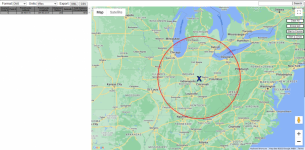The past few posts have also been good info. I'm not familiar with your area (I'm in the SW US), but let's see if we can fuel your interest a little more.
Look up the ARInc frequencies in the 128 ~ 131MHz range. ARInc is a company that has transmitters & receivers all over the country. They provide communications to commercial a/c in such cases where the pilot can't reach his dispatcher on their company frequency. That being the case, the pilot can contact an ARInc dispatcher, who can transfer info between the pilot & his company, or set-up a radio patch between the pilot & company dispatcher. These can be boring-to-interesting conversations, from routine flight info, to on-board medical or domestic emergencies.
If you search 123.0 ~ 123.6 you will find a plethora of air-to-air and air-to-ground conversations: law enforcement, air ambulances, test flights, commercial pilots chit-chatting, etc. Even a rare but occasional military a/c.
Speaking of military a/c, someone already mentioned the military a/c band 225 ~ 380Mhz. That's the UHF band. There is a VHF military a/c band, 138 ~ 150Mhz. Like the other a/c bands, this is mostly AM mode, but I have heard a few a/c using FM mode here. The most active part of this band is 138 ~ 144Mhz. The military a/c also have low band capability in the 30Mhz ~ 70Mhz range. Mostly the 30 ~ 40Mhz area. This is mostly for air-to-ground comms with the ground troops, but you'll hear a/a comms also.
Heads-up: Although the air traffic controllers mostly use the military UHF freqs with military a/c, sometimes you'll hear military a/c with ATC on the VHF freqs. They usually ID with a name like BULLET and a two digit number.
Some standard military freqs to monitor would be 255.4 FSS, 311.0-319.4-321.0-372.2 PTD (Pilot To-Dispatch), 364.2 NORAD.
Listening to a/c is 90% boring ATC comms, but there's a lot of interesting comms to hear if you know where to look.
Have fun!



